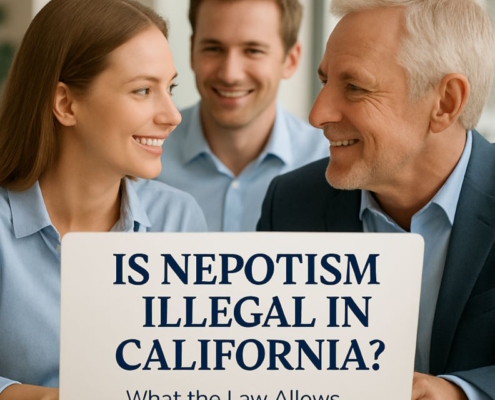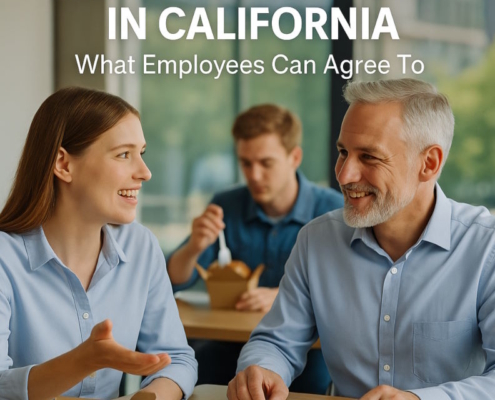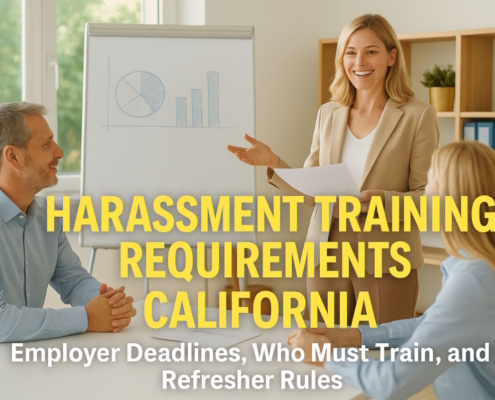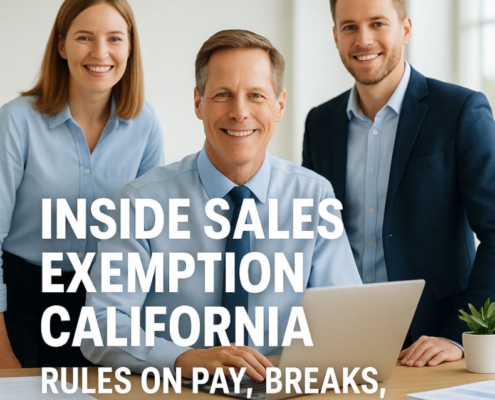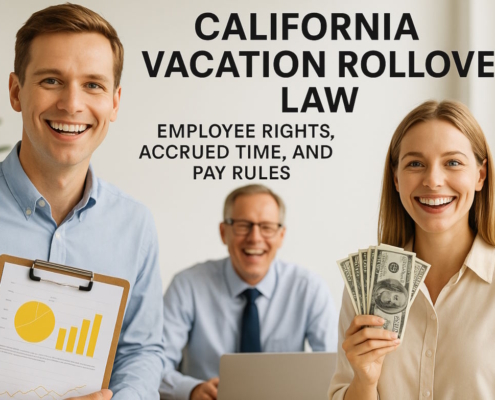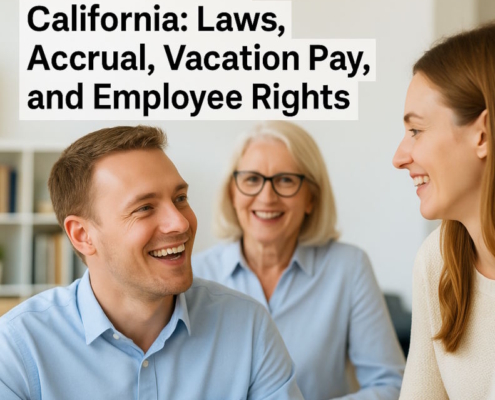Examples Of Unfair Labor Practices by Management
What is an unfair labor practice by management? Examples of unfair labor practices management include: denying benefits and promotion, retaliatory discharge, launching strike unrelated to working condition, etc.
By Brad Nakase, Attorney
Email | Call (800) 484-4610
What are examples of unfair labor practices?
The struggle for workers’ rights and fair treatment has been a longstanding battle in the realm of labor relations. The National Labor Relations Act (NLRA) was enacted to safeguard employees from unfair labor practices and ensure that their collective voices could be heard. While the NLRA seeks to strike a balance between employee rights and the rights of employers, historical evidence shows that some management entities have attempted to hinder employees’ efforts to organize and advocate for improved pay, benefits, and working conditions.
The NLRA explicitly prohibits various unfair labor practices by employers, aiming to foster an environment where workers can freely engage in concerted activity and unionize without fear of retaliation. Below are some real-world instances of unfair labor practices committed by management, revealing challenges faced by workers in their quest for better working conditions and a stronger collective voice.
- Creating or Dominating Their Own Union:
One common unfair labor practice observed is when management establishes its own “company union” to dilute the influence of independent unions or thwart the formation of authentic employee-led unions. By doing so, management seeks to retain control over the collective bargaining process, stifling employees’ ability to negotiate for fair wages and better working conditions on equal footing.
- Interference with Employee Organizing Efforts:
Unscrupulous employers may resort to tactics aimed at dissuading employees from forming or joining unions. For instance, they may discourage discussions about unions during work hours while allowing other non-employment-related conversations, creating a chilling effect on workers’ willingness to participate in concerted activities.
- Discrimination Against Pro-Union Employees:
Management must refrain from discriminating against employees involved in protected concerted activities. However, some employers have been known to retaliate against pro-union employees through actions like layoffs, transfers, or reassignments, aiming to silence their advocacy and intimidate others who may contemplate joining a union.
- Retaliation Against NLRA Involvement:
Employees who provide testimony to the National Labor Relations Board (NLRB) or file complaints with the board are protected from retaliation. Nevertheless, instances of employer retaliation persist, with some workers facing adverse consequences for their involvement in NLRB proceedings.
- Blocking Employees’ Attempts to Address Workplace Issues:
Under the NLRA, employers are prohibited from obstructing employees’ efforts to address workplace mistreatment, ensuring that workers can collectively raise their concerns without fear of repercussions. Despite this, some employers may try to suppress such actions, further exacerbating workplace tensions.
- Refusal to Bargain in Good Faith:
Once employees form a union, employers are obligated to engage in collective bargaining in good faith. However, some employers may employ delaying tactics, scheduling unreasonable bargaining sessions, or outright refusing to consider workers’ legitimate demands, undermining the spirit of fair negotiation.
The NLRA’s framework is designed to protect employees’ right to organize and collectively advocate for better working conditions. Despite this legislative safeguard, unfair labor practices by some employers continue to hinder workers’ efforts to secure their rights.
What Are Unfair Labor Practices in California?
Unfair labor practices are a serious problem across the country, and the issue often proves very divisive. The National Labor Relations Act (NLRA) intends to create a balance between employers’ rights and workers’ rights. While the NLRA allows workers to attempt to improve their working conditions legally, the act does not require employers to form or join unions.
What can workers do to improve their working conditions? In addition to forming unions, workers can engage in group activities, including planning, discussion, and holding meetings with employers. Additionally, the NLRA limits units to keep unions from controlling their membership. This rule means that workers should not feel compelled or forced to unionize, and they can opt-out.
When employers perpetuate unfair labor practices, problems quickly arise, and employees suffer. It can be difficult to maintain a balance of power and respect between employers and workers, but the goal is for acts like the NLRA to help achieve mutual respect and harmony. However, unfair labor practices by management exist in California, and employers are often sued and defended by employment dispute attorney.
What is an Example of Unfair Employer Labor Practices in the Real World?
To effectively deal with unfair labor practices, both employees and employers must be able to recognize them. Here are two unique scenarios of unfair labor practices. While these are hypothetical, they are also realistic examples of actions taken by employees and employers.
While labor unions play a crucial role in advocating for workers’ rights and improving their working conditions, it is essential to acknowledge that, like any organization, unions can also commit unfair labor practices. Just as employers can violate labor laws, unions must also adhere to the regulations set forth by the National Labor Relations Act (NLRA). There is a historical backdrop of union intimidation and coercion, making it imperative to recognize and address these issues to ensure fair and just treatment for all workers.
Examples Of Unfair Labor Practices #1
In an ideal work environment, transparency and fairness govern the allocation of wages, ensuring that employees are compensated based on merit, experience, and seniority. However, in some instances, unfair wage practices may arise, leaving employees feeling undervalued and dissatisfied.
Such is the case in our hypothetical situation, where an employee handbook prohibits wage discussions, perpetuating a lack of information about pay rates. This lack of transparency becomes glaringly apparent when it is discovered that younger, less experienced employees are earning significantly more than their more seasoned counterparts. The story takes a dramatic turn when an older coworker voices concerns about the pay discrepancies, resulting in adverse consequences for both the concerned employees.
The National Labor Relations Act (NLRA) seeks to protect workers’ rights to discuss wages and engage in protected concerted activity to address issues such as unfair wage disparities. Indeed, one of the fundamental aspects of a fair workplace is the ability of employees to discuss wages openly and honestly. Wage transparency fosters trust among coworkers, ensures equitable pay, and helps uncover any potential discrimination or wage disparities that may exist. The NLRA recognizes the significance of wage discussions and considers them protected concerted activities, enabling employees to collaborate and address workplace issues collectively.
In the above example, the employee handbook’s prohibition on wage discussions restricts open dialogue and transparency, leaving employees unaware of potential pay disparities. The discovery that younger and less experienced employees receive higher wages than their more seasoned counterparts raises valid concerns about unfair wage practices.
When the older coworker discusses the pay discrepancies with management, they are exercising their right to engage in protected concerted activity, seeking to address a perceived injustice in the workplace. However, the employer’s subsequent company-wide email warning against discussing wages and the subsequent termination of both employees represent clear violations of the NLRA.
In this situation, the affected employees have the right to pursue legal action against the employer for NLRA violations. The NLRA protects employees from retaliation for exercising their rights to discuss wages and engage in protected concerted activity. By firing the employees after they addressed wage disparities, the employer has violated their NLRA-protected rights.
The affected employees can file a charge with the National Labor Relations Board (NLRB), the federal agency responsible for enforcing the NLRA. The NLRB will investigate the allegations, and if violations are found, they can order appropriate remedies, including reinstatement of the terminated employees, back pay, and other corrective actions.
Examples Of Unfair Labor Practices #2
In this hypothetical scenario, Worker A and Worker B, who work in the same labor-intensive industry but for different employers, find themselves facing drastically different working conditions. Worker A and their coworkers are exhausted before the end of their shifts, lacking the benefits and protections that a collective bargaining agreement could provide. Worker B, on the other hand, reveals that they used to experience the same exhaustion but now enjoys more mid-day break time due to the terms negotiated in their new collective bargaining agreement.
Inspired by Worker B’s improved work conditions, Worker A decides to take action to improve their own situation and that of their colleagues. With no union at their job, they opt to circulate a petition during break time, gauging interest in forming a union to advocate for better working conditions, fair wages, and reasonable break times.
However, the employer of Worker A becomes aware of the unionizing efforts through footage from break room cameras, raising concerns about the violation of employee privacy and rights. Subsequently, the employer schedules individual meetings with employees who signed the petition, using these discussions to deliver an alarming message. They warn the employees that there could be significant layoffs if the union is certified, creating a climate of fear and intimidation to dissuade support for union activity.
The employer’s behavior in this situation can be considered an unlawful threat against union activity and is a clear violation of the National Labor Relations Act (NLRA). The NLRA, enacted to protect the rights of employees to engage in collective bargaining and concerted activities, prohibits employers from interfering with, restraining, or coercing employees who exercise their rights under the Act.
By threatening layoffs in response to employees’ unionizing efforts, the employer is attempting to suppress employees’ right to organize and collectively bargain for better working conditions. Such actions are meant to deter employees from joining or supporting a union and undermine the fundamental principles of fairness and freedom of association in the workplace.
In this hypothetical scenario, Worker A and their colleagues have the right to file charges with the National Labor Relations Board (NLRB) against their employer for NLRA violations. The NLRB will investigate the allegations and take appropriate actions to remedy the situation, which may include ordering the employer to cease their unlawful actions, reinstating any terminated employees, and imposing penalties for the violations.
Unfair wage practices and unlawful threats against union activity not only undermine the rights and well-being of workers but also erode trust and collaboration in the workplace. It is crucial for employers to respect the rights of their employees, foster open dialogue, and create an environment where workers can freely express their concerns and advocate for positive change. Upholding the principles of the NLRA ensures that workers are empowered to collectively pursue better working conditions and equitable treatment, fostering a more harmonious and productive labor landscape.
The NLRA outlines specific prohibitions on unfair labor practices by unions, aimed at safeguarding the rights of both union and non-union workers. Some examples of unfair labor practices by unions include:
- Coercing Workers to Join or Remain in the Union:
Unions are prohibited from pressuring or threatening workers to join or remain in the union against their will. Workers have the right to decide whether to join or support a union without fear of intimidation or retaliation.
- Initiating Strikes Unrelated to Employment Terms and Conditions:
Unions are not allowed to call for strikes for issues unrelated to the terms and conditions of employment. Strikes must be centered on legitimate workplace concerns, such as wages, benefits, or working conditions.
- Charging Excessive Fees:
Unions must not impose excessive fees on their members. The fees charged by unions must be reasonable and transparent, and workers should not be burdened by disproportionate financial obligations.
- Seeking Employer Retaliation Against Non-Supportive Employees:
Unions cannot attempt to get employers to punish workers who do not support or join the union. All employees have the right to express their views on unionization freely without facing repercussions.
- Misconduct on Picket Lines:
Unions must not engage in misconduct on picket lines, such as assaulting or threatening workers who cross the picket line. Peaceful picketing is protected, but violence or intimidation is not acceptable.
- Improperly Claiming Representation:
Unions must be properly certified to represent workers in a particular workplace. Acting as if they are the union for a workplace without proper certification is an unfair labor practice.
- Failure to Engage in Good-Faith Bargaining:
Unions are obligated to engage in good-faith bargaining with employers during collective bargaining negotiations. Refusing to come to the bargaining table or disregarding proposals from management is not in compliance with the NLRA.
If an employee suspects that they are a victim of unfair labor practices by their union, seeking legal advice from an experienced employment attorney is crucial. These professionals can provide guidance, assess the situation, and help protect the worker’s rights under the NLRA.
How do you file a complaint about unfair labor practices?
The rights of workers to engage in collective bargaining, join or form unions, and address workplace issues without fear of discrimination or retaliation are fundamental principles upheld by the National Labor Relations Act (NLRA). However, there are instances when either management or a union may violate these rights through unfair labor practices. If you find yourself in such a situation, it is vital to be aware of your rights and take appropriate action to protect them. Filing a complaint with the National Labor Relations Board (NLRB) is an important step in seeking redress and ensuring a fair and just working environment for all.
Unfair labor practices refer to actions by either management or a union that violate the rights protected under the NLRA. These practices may include coercion, intimidation, discrimination, retaliation, improper bargaining, and various other actions that undermine the rights of workers to organize and collectively bargain.
The NLRA protects the rights of both union and non-union workers and aims to prevent unfair labor practices that hinder the free exercise of these rights. Whether it is management attempting to suppress unionizing efforts or a union engaging in discriminatory practices against non-supportive workers, recognizing and addressing unfair labor practices is essential for maintaining a fair and equitable workplace.
If you believe that you have experienced an unfair labor practice, it is crucial to act promptly. The NLRA grants employees a window of six months from the date of the incident to file a complaint with the NLRB. Waiting beyond this timeframe may result in the loss of your right to seek redress.
The following are the steps you should take to file a complaint with the NLRB:
- Gather Information: Collect all relevant evidence and documentation related to the alleged unfair labor practice, including dates, times, witnesses, and any written communication.
- Complete the NLRB Form: Visit the NLRB’s official website or the nearest regional office to access the appropriate complaint form. Fill out the form accurately, providing all relevant details about the incident.
- Submit the Complaint: Once you have completed the form, submit it to the NLRB within the six-month time frame. You can file the complaint online, by mail, or in person at the nearest NLRB regional office.
- NLRB Investigation: After receiving the complaint, the NLRB will conduct an investigation to assess the validity of the allegations. They may also attempt to mediate between the parties involved to resolve the issue amicably.
- Resolution: Depending on the findings of the investigation, the NLRB may issue a formal complaint against the party involved or seek resolution through settlement or negotiation. If the complaint is upheld, the NLRB may order remedies such as reinstatement, back pay, and changes in workplace policies or practices.
Filing a complaint with the NLRB is a crucial step in addressing unfair labor practices and protecting your rights as a worker. The NLRA exists to ensure that all employees have the freedom to engage in concerted activities and exercise their rights without fear of reprisal. By taking timely action and filing a complaint when necessary, workers can contribute to a more equitable and respectful workplace environment, promoting a culture of fairness, respect, and empowerment for all employees.
Learn more about: Business | Corporate | Employment
See all articles: Business | Corporate | Employment



